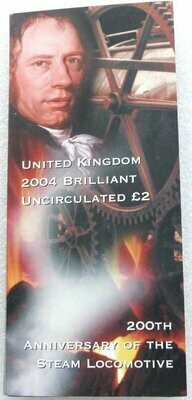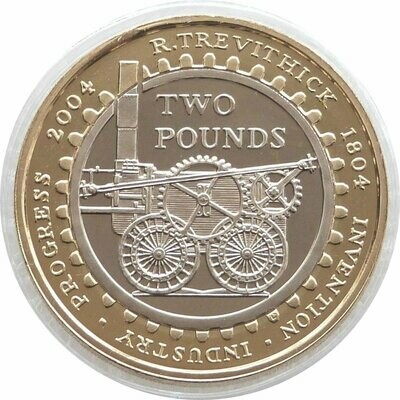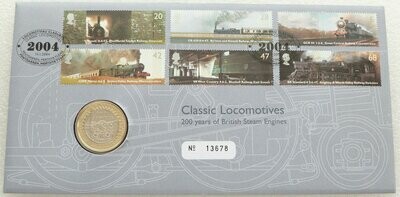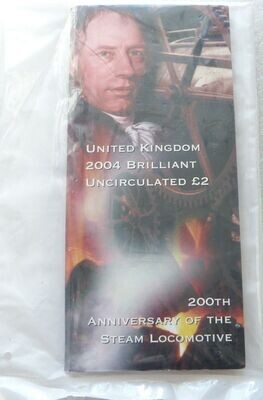2004 Trevithick Steam Locomotive Piedfort £2 Silver Proof Coin Box Coa
In 2004, to celebrate the 200th Anniversary of the First Steam Locomotive, the Royal Mint released a Limited Issue Piedfort £2 Two Pound Silver Proof Coin struck in solid .925 Sterling Silver.
The Industrial Revolution was a period that saw countries like Britain progress from being predominantly agrarian to being much more urbanised. The development of the steam engine played a crucial role in this transition.
Although steam-powered engines had been used from the early eighteenth century, they were often large and unreliable machines fixed into position to perform certain tasks. It was not until the beginning of the nineteenth century that a Cornishman, Richard Trevithick, revolutionised steam power by devising the first steam-driven locomotive engine.
Following a bet between Samuel Homfray owner of the Penydarren Iron Works and Richard Crayshaw owner of the Cyfarthfa Iron Works, in 1804 Trevithick built a steam engine that could haul ten tons of iron from Penydarren works along a tramway to Navigation House in Abercynon, a total distance of nine miles. The journey was completed in four hours and five minutes. The first ever steam-powered vehicle had been driven on rail.
Trevithick's engine was the first true locomotive.
The reverse designed by Robert Lowe is a depiction of Trevithick's Locomotive Penydarren and the denomination "Two Pounds" surrounded by a cog representing the Industrial Revolution and the inscription "R Trevithick 1804 Invention Industry Progress 2004" with a patterned edge.
The obverse features Ian Rank Broadley's mature, reflective portrait of Her Majesty, Queen Elizabeth II.
These legal tender coins have been struck to proof quality using specially prepared dies and highly polished blanks.
Piedforts are coins which have been specially struck on thicker than normal blanks.
As their name suggests they are closely associated with France, where from the twelfth century they were apparently issued by the Kings as presentation pieces.
In Britain the practice of striking piedforts is later and less frequent, but medieval and Tudor examples are known.
- Limited Mintage of 5,303 Worldwide
- Piedfort Double the Thickness and Weight of it's Standard Counterpart
- Finished to Royal Mint's Proof Quality in Solid .925 Sterling Silver
- Celebrating the 200th Anniversary of the First Steam Locomotive
- Royal Mint Boxed with Certificate of Authenticity






